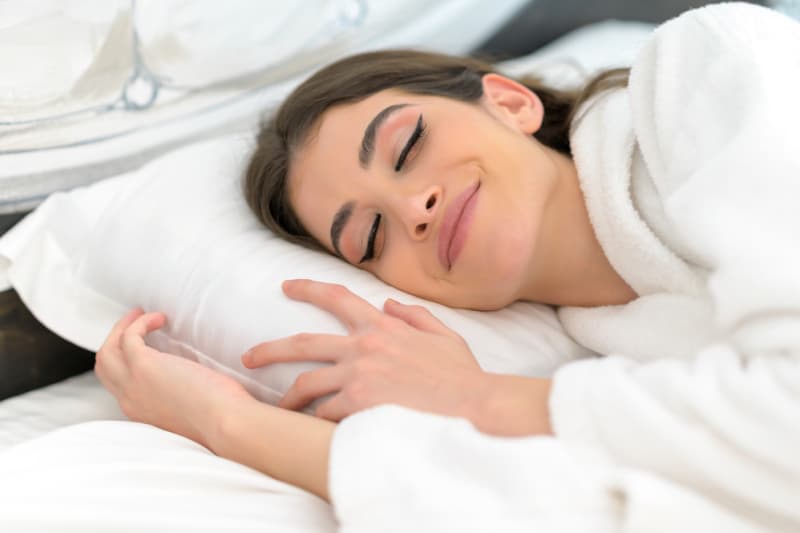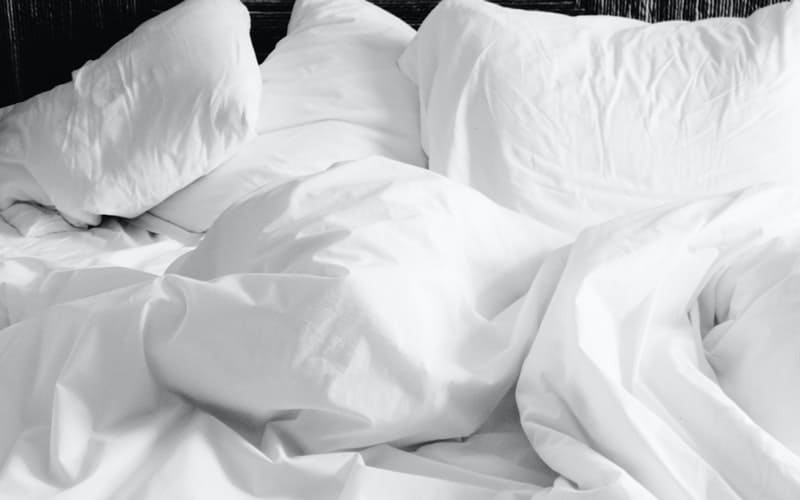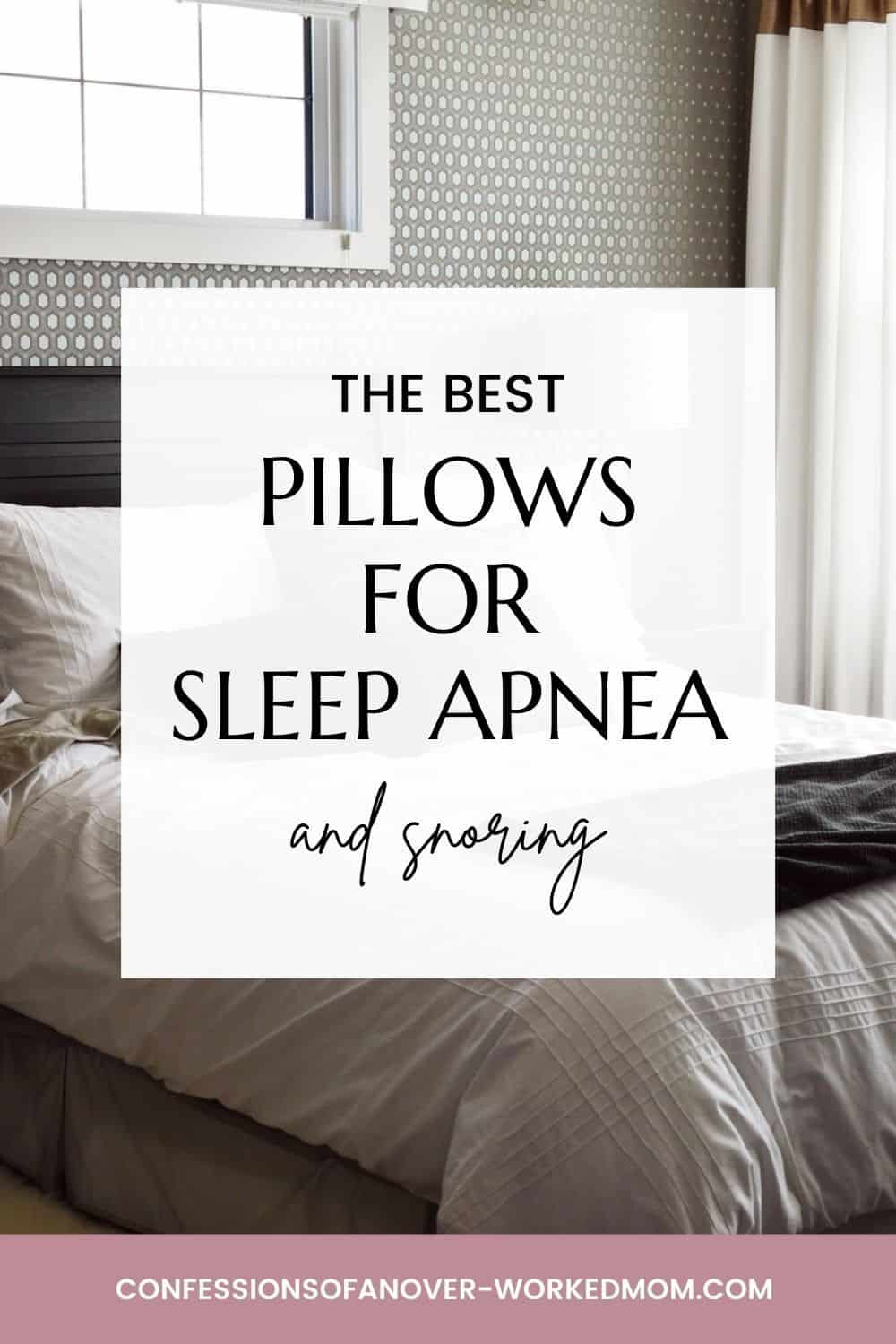Last Updated on May 20, 2023 by Ellen Christian
Sleep apnea is a common condition that affects millions of people. If you are one of them, then you know how hard it can be to get a good night’s sleep. Choosing the best pillow for sleep apnea can go a long way toward helping you sleep soundly.
Posts may be sponsored. This post contains affiliate links, which means I will make a commission at no extra cost to you should you click through and make a purchase. As an Amazon Associate I earn from qualifying purchases.

Best Pillow for Sleep Apnea
The best way to deal with sleep apnea is by using the right pillow for your needs and sleeping position, but there are so many options out there! Which ones work? Which ones don’t? What should I look for in a pillow? How do I find the best pillows for sleep apnea that’s the right one for me?
There are several factors to consider when choosing the best pillow for sleep apnea, including material, size, and shape.
Here are some tips to help you make an informed decision about which pillow will give you better quality rest. I’ve narrowed down the choices into three top picks that fit most peoples’ needs based on their sleeping habits and preferences.

Ergonomic design
There are a few things to consider when choosing a sleep apnea treatment pillow. First and foremost it should help you maintain the right level of support for your neck and head so that it aligns with your natural position.
If your spine is misaligned overnight your muscles will tense up, causing more airway restriction and making it harder for you to breathe. It’s like lying on a mattress that is too firm or soft: the wrong support can cause back pain and prevent you from getting good rest. Ideally, this pillow should be able to offer different levels of support throughout the night as the body naturally goes through different stages of sleep.
For example, if you lay on your back the pillow should support your head and neck, but as you start to change positions throughout the night it will gradually soften or compress so that it’s not pushing against you and waking you up. It also needs to be able to support different shapes of heads and necks with different thicknesses and make-ups (i.e. big muscle heads, little skinny necks, and everything in between).

Best pillow for breathing problems
To be a good remedy for sleep apnea a pillow also needs to be supportive enough to keep the upper airway open without causing the user any discomfort or facial pressure/discomfort that would wake them up. It should be able to stay in place all night so there are no adjustment issues. Being easy to use is a big plus since if you need to fidget with the pillow all night it will take away from your sleep quality and interrupt your progress.
The last thing that’s important is the ease of use. For those who have trouble sleeping or don’t have a lot of time in the morning getting ready then it needs to be simple and quick to use. No extra steps should be needed, otherwise, it’s just going to mean one more thing that you’re not doing right before bed or one more thing that will wake you up later when checking your sleep apnea machine.
The design has to be comfortable and unobtrusive so you won’t feel like it’s inhibiting your sleep at all.

Main Pillow Types
There are three main categories of pillow types to choose from. Each type has certain pros and cons depending on your needs, so decide what you need before starting your search for the best pillow for sleep apnea:
1. Traditional Contour Pillows: These pillows are a great choice if you sleep on your back, but they are not the best for side sleeping. For back sleepers, these pillows provide support in all the areas that need it most: between the knees, behind the head, and keeping your neck aligned with your spine. However since these pillows only come up to your neck they don’t provide proper support for the head or throat during side sleeping, when we naturally turn our heads to the side.
2. Combination U-Shaped and Contour Pillows: The combination u-shaped/contour pillow is a great choice for back, stomach, and side sleepers alike. They are shaped like a regular u-shaped pillow, but also have a contour section to fill in the gaps for side sleeping. The best part is that they may be adjustable so you can choose where to compress it as your body changes position throughout the night.

3. Contour Pillow: Most people who suffer from snoring and Obstructive Sleep Apnea use a contour pillow. Contour pillows have a specific curve to them that is designed to be the best fit for keeping your airway open while you sleep. A poorly designed or improperly adjusted contour pillow can cause facial pressure and discomfort, so make sure that the one you choose has good padding and feels comfortable against your face.
- Use the Contour Pillow along with the Side Sleeper Knee Pillow for the best support.
How to get better sleep
Getting a good night’s sleep isn’t as simple as setting a healthy sleep schedule. The Bonamour Sleep System is the only minimally intrusive sleep support system that uses binaural beats sleep technology.
These sleep headphones are comfortable and can be worn all night, even if you’re a side sleeper. They provide healthier and faster deep sleep with an improved HRV. Try them here.
More healthy sleeping articles
If you enjoyed learning more about the best pillow for apnea, you might want to check these out.
- Natural ways to stop snoring
- Best essential oils for snoring
- Using anti-snoring mouthpieces
- Why you aren’t sleeping and how to fix it
- How to sleep for shoulder pain
- Benefits of CBD tea for sleep

Ellen is a busy mom of a 24-year-old son and 29-year-old daughter. She owns six blogs and is addicted to social media. She believes that it doesn’t have to be difficult to lead a healthy life. She shares simple healthy living tips to show busy women how to lead fulfilling lives. If you’d like to work together, email info@confessionsofanover-workedmom.com to chat.
